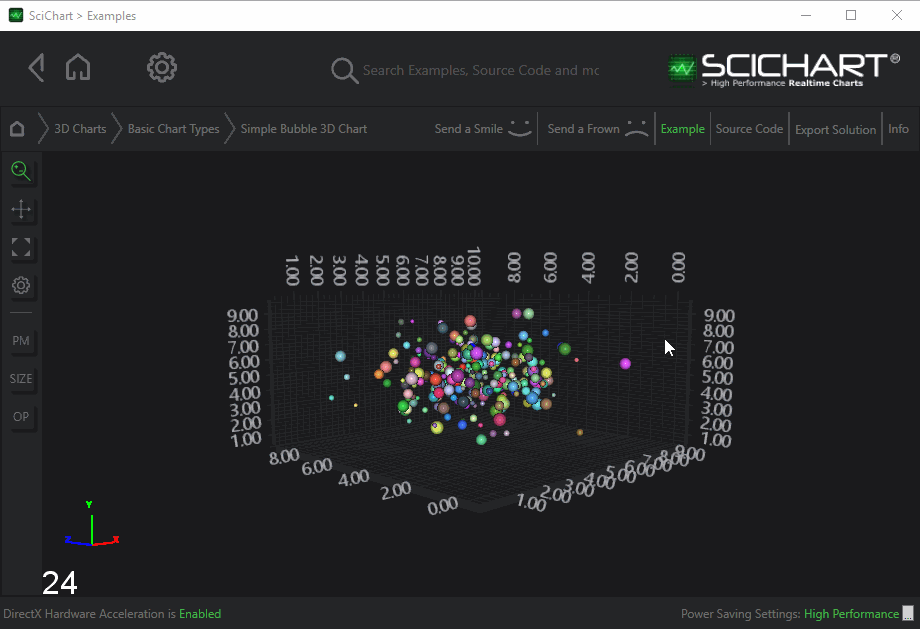The Orbit Modifier
Zooming and Panning a Chart in SciChart3D is achieved by moving the SciChart3DSurface.Camera to a new location.
The article "The SciChart3DSurface Camera" goes into detail how this camera class works and how to manipulate it programatically to achieve various views.
If you want to add simple panning of the camera to the chart then you can do so using our ChartModifiers API. The OrbitModifier3D performs orbital motion of the camera giving the appearance of the chart rotating.

Declaring an OrbitModifier3D in XAML
Declaring an OrbitModifier3D is as simple as adding one to the SciChart3DSurface.ChartModifier property. This can be done as a single modifier, or as part of a ModifierGroup3D.
